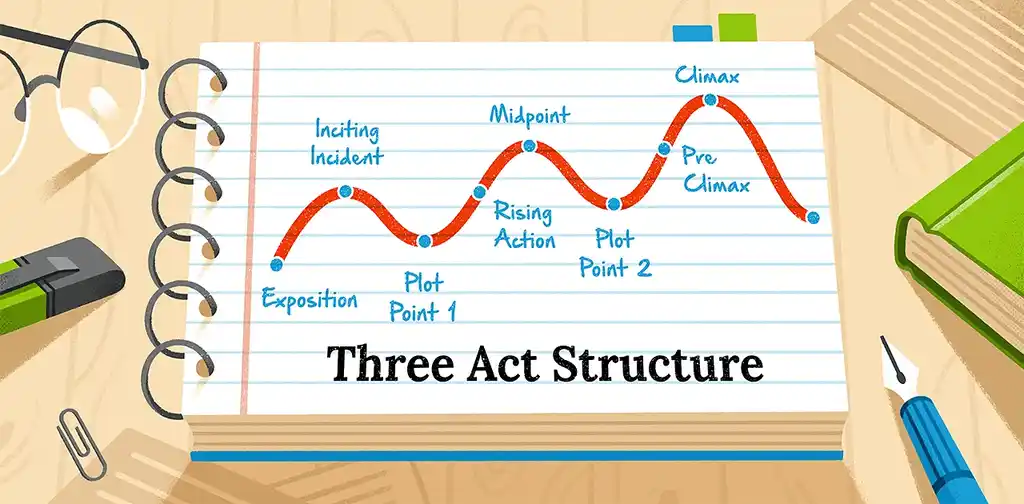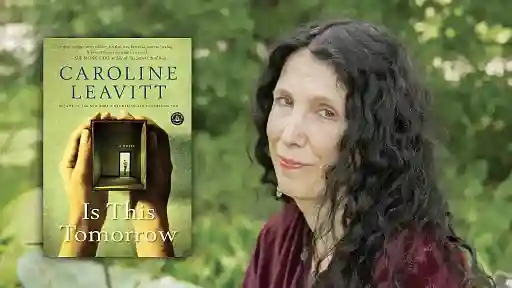Posted on Oct 18, 2017
Mastering Chapter Length: How Long Should Your Chapters Be?
About the author
Reedsy's editorial team is a diverse group of industry experts devoted to helping authors write and publish beautiful books.
More about the Reedsy Editorial Team →Savannah Cordova
Savannah is a senior editor with Reedsy and a published writer whose work has appeared on Slate, Kirkus, and BookTrib. Her short fiction has appeared in the Owl Canyon Press anthology, "No Bars and a Dead Battery".
View profile →Stop us if you’ve experienced this before: the clock strikes 8pm and you realize that you really need to pick up your drycleaning. But you’re right in the middle of your book! Well, you’ll put the book down when you get to the end of this chapter, you reason.
30 minutes afterward, you can’t resist taking a quick peek to see where you are. That’s when you discover: you’re only a quarter of the way through.
If you’ve ever felt this sinking feeling before, you’ve already got a sense of why sectioning word count should be so darn important to writers. Lengthy chapters can make readers want to give up on reading a story.
So, what’s the sweet spot for an average chapter’s word count — and why should it matter to you? Let’s find out.
If you'd like to download our free cheat sheet on word counts, skip ahead to the appropriate section below! Otherwise, read on.
Why does the word count of a chapter matter?
Chapter breaks aren’t blocks of space that the writer just arbitrarily decided to insert. Instead, they:
- help keep your readers in the story;
- help reset the story so that there’s no information overload. (Imagine watching all of The Lord of the Rings at once!);
- help you adjust the pacing of the story and craft a feeling of suspense.
Knowing this, why does chapter length matter? Imagine that you’re a conductor for a moment. If your story is a melody, its sections make up the underlying beat or rhythm. So the length of these affects the pacing of your story, and the way the reader experiences it. Do you want the pace to be brisk to the reader and skip in a staccato? Or do you want to keep your readers suspended on a whole note that carries on for some time?
A break also tells the reader to mentally prepare for some sort of shift. If your chapters are too short, that might make for an erratic experience. You might not be able to build up the forward momentum that your story needs to click for the reader.
Long chapters, on the opposite end of the spectrum, risk dropping the reader out of the story forever. That’s because a break between sections allows readers to take a quick breather in between words. If we made this one block of text go on for twenty pages or thirty pages on end, for instance, our best guess is that your eyes would glaze over and your skin would fall away and your fingernails would rot while you turn into The Skeleton With a Burning Cigarette, forcing yourself to continue reading a slab of text that just never seemed to stop. Or — worse still — you’d give up and put the text aside altogether.
Therefore, the word count of a novel is crucial if you want your book to be fit for publication. But the word count of a chapter matters if you want your story to flow right. Of course, when you're writing the first draft of your story, you want to just get your words out on paper. But chapter word count is something that you want to keep in mind for future edits.
So, with all of this in mind, is there actually an average word count you should aim for?
PRO-TIP: Have you ever wondered how long your novel should be? Take our short quiz below to find out!
✅
How long should your book be?
Find out what word count the industry expects for your genre — it takes 15 seconds!
How long should a chapter be?
To determine how long should a chapter be, we examined books from a wide variety of genres. Based on this dataset of novels, we can establish some guidelines for chapter length: the average word count of a chapter generally ranges between 1,500 words to 5,000 words, with 3,000-4,000 words being the most common sweet spot.
Does this mean that every chapter must end up somewhere in this range? Heck no. Books with much shorter sections become bestsellers all the time. (Kurt Vonnegut or Dan Brown, for instance.) And are there books with chapters that consistently score above 5,000 words? Of course! May we introduce you to J.R.R. Tolkien?
But it's safe to say that 1,500-5,000 is the normal range for most books. In any case, to see how authors use this tactic to set their pacing, we also mapped out the word count of every chapter in four famous books:

And as you can see, it varies, depending on the story. The average chapter word count of these novels falls within the 2,000-5,000 range. As Persuasion progresses, Jane Austen seems to elongate hers, building them up on a crescendo. George R.R. Martin and Harper Lee keep things more evenly paced in A Game of Thrones and To Kill A Mockingbird, respectively. The chapters in The Fault In Our Stars, meanwhile, grow shorter just as Hazel's time with Augustus shortens. Ultimately, the way you section your book depends on the effect that you want to achieve at any given point in your novel.

Does your manuscript need to be pitch-perfect?
Over 2,000 of the best editors are on Reedsy. Meet them today and make sure your book is ready for the market.
Learn how Reedsy can help you craft a beautiful book.
CHEATSHEET: What Should Your Word Counts Be?
If you're thinking right now that these are a lot of numbers to wrap your head around, don't worry! We created this cheatsheet to help you visualize the data. It has everything you might want to know about your novel's word counts — including how long a novel in full should be. Simply enter your email below to unlock it.

Enter your email address for Reedsy's Word Count Cheatsheet!
We'll send it to your inbox right away.
How do you write the chapter break?
Of course, sometimes the best way to chapter your book won’t crystallize until you start editing. So if you want your chapter breaks to pack a punch (whether it’s your first, second, or even fifth draft), these are a few of the ways you can frame the end of each section.

FREE COURSE
How to Plot a Novel in Three Acts
In 10 days, learn how to plot a novel that keeps readers hooked
1. The Promise
Broadly speaking, a break does one of two things: look forward or look back. The former promises more intrigue in the next chapter, often by foreshadowing things to come. This is from the ending of Chapter 3 in The Hobbit:
The next morning was a midsummer’s morning as fair and fresh as could be dreamed: blue sky and never a cloud, and the sun dancing on the water. Now they rode away amid songs of farewell and good speed, with their hearts ready for more adventure, and with a knowledge of the road they must follow over the Misty Mountains to the land beyond.
— J.R.R. Tolkien, The Hobbit
This passage promises the reader plenty of upcoming adventure. Of course, its strategic placement at the end of the chapter also sets a reader’s irony senses tingling, telling them that things might not be all so bright and cheery for Bilbo and the gang soon.
2. The Resolution
Looking back on past events is another common way to end a chapter. This technique can simply bring the scene to a close, or it can be a way to summarize. In the exposition of Harry Potter and the Prisoner of Azkaban, J.K. Rowling re-familiarizes us with Harry Potter, an unusual boy wizard who misses some school friends. In this case, the conclusion nicely wraps up the themes and motifs she’s just introduced:
Deciding that he’d worry about the Hogsmeade form when he woke up, Harry got back into bed and reached up to cross off another day on the chart he’d made for himself, counting down the days left until his return to Hogwarts. Then he took off his glasses and lay down; eyes open, facing his three birthday cards.
Extremely unusual though he was, at that moment Harry Potter felt just like everyone else — glad, for the first time in his life, that it was his birthday.
— J.K. Rowling, Harry Potter and the Prisoner of Azkaban
Though it’s normally a bit of a cliché to close a chapter by getting the character to fall asleep, Rowling does a clever twist on it by making this an occasion worth describing.

FREE RESOURCE
Get our Book Development Template
Use this template to go from a vague idea to a solid plan for a first draft.
3. The Cliffhanger
You bet we’ve all experienced our fair share of screaming matches with this sort of ending. Charles Dickens, whose serialized novels got readers in the 1800s coming back every week, was a master at writing cliffhangers — sometimes even in the middle of a fight.
Here is an example from Chapter 5 of Great Expectations:
But I ran no farther than the house door, for there I ran head-foremost into a party of soldiers with their muskets, one of whom held out a pair of handcuffs to me, saying, “Here you are, look sharp, come on!”
— Charles Dickens, Great Expectations
This time, the chapter ends mid-scene. In addition, this particular cliffhanger rests on a physical act — the soldiers approaching Pip. But it could just as well be a dawning mental or emotional realization that keeps readers on the edge of their seats. Whatever shape the cliffhanger takes, it’s the anticipation you generate that will keep your audience eagerly flipping those pages.
One caveat: you can only use this technique sparingly, or else it’ll start to grow repetitive and lose its impact.
4. The Era or POV Jump
If you’re writing a book that uses multiple perspectives or jumps time periods, the chapter break is an obvious opportunity to switch things up. One of the most prominent practitioners is George R.R. Martin’s A Song of Ice and Fire series, which cycles between a total of 31 characters. Rainbow Rowell’s Eleanor & Park also uses a break effectively to shift POVs:
Park couldn’t think of a way to get rid of her on the bus. Or a way to get rid of himself. So he put his headphones on before the girl sat down and turned the volume all the way up.
Thank God she didn’t try to talk to him.
— Rainbow Rowell, Eleanor & Park
Then the next section segues smoothly into Eleanor’s take on things, keeping readers intrigued by revealing a new angle on previous events. When there are more than two POV characters, you'll need to make sure that you distribute time equitably between them while making each character interesting in their own right, so that one 7,000-word chapter with a boring character doesn't slow the whole story down.
That said, there are always exceptions, which takes us to our next important point...
Guidelines, not rules
As with everything else when it comes to writing a book, these are only guidelines—not rules. Though the average word count of a chapter is around 2,000 – 5,000 words, it all depends on your story. (We can't emphasize this enough.)
There are plenty of books that purposefully play with the word counts of their chapters. The Luminaries, which won the Man Booker Prize in 2015, has 12 sections that steadily decrease in word count to mirror the waning of the moon. (The first chapter of The Luminaries is 360 pages, whereas the final is two pages.) Then there’s William Faulkner’s As I Lay Dying, in which Vardaman’s famous five-word sentence, “My mother is a fish,” is the whole of Chapter 19. Or consider Fahrenheit 451, which contains a Part I and Part II — but no chapters.
So, don’t write a chapter with only one eye on your story and the other on your word count. When you're outlining your book and writing your first draft, concentrate on making the content of your story the best it can be. Then you can always circle back to adjust word counts afterward, with pacing and reader experience in mind.

NEW REEDSY COURSE
How to Write a Novel
Enroll in our course and become an author in three months.
What do you think about chapter word counts? Have any tips for your fellow writers? Share your thoughts in the comments below!








29 responses
Robert Run says:
19/10/2017 – 19:22
In as many as I could, in my book, I wrote the Chapters so they can stand alone as little fables and tales of their own. In hopes one can enjoy the Chapter w/out having to know the entire plot.
writerkris says:
19/10/2017 – 20:21
At least ten pages per chapter. No idea how many words that might be, but I might go and check. And always at an interesting point so they'll hopefully keep reading. Not a cliffhanger often, because I find those personally annoying.
↪️ Brittany Myers replied:
27/08/2019 – 12:01
For my book, my goal is to write ten pages per chapter. It'll be 10 10.
robert easterbrook says:
19/10/2017 – 20:47
It's all about pacing. Not word count. Scene breaks, yes. And chapter breaks, for sure. Fuck statistics. Stop trying to make novelists confirm to 'formulaic' notions of writing. Your last paragraph is titled Guidelines, not rules, yet you managed to squeeze in a nugget about 'word count'. This is like claiming something is true in research before you've done the research, then doing the research and finding no support for your claim, but then concluding your claim is still true despite the evidence. Contradictory bullshit.
↪️ Reedsy replied:
20/10/2017 – 09:02
You're absolutely right, it's all about pacing. However, word count *does* have an incidence on pacing, doesn't it? There is only so much you can write at the same pace… And yes, our last paragraph explains that these are merely guidelines. Offering an average word count that 90% of novels tend to fall into is exactly that: a guideline. We're not saying: "you should do like 90% of other authors," we're saying "here's how 90% of novels out there look like, and here's a rational explanation as to why (pacing, rhythm). If you want to do it differently, all the more power to you."
nancy says:
19/10/2017 – 23:37
Curious you didn't mention All the Light We Cannot See. It's been a best-seller for so long, and the chapters are one and two pages. Any comments?
↪️ Reedsy replied:
20/10/2017 – 09:03
We couldn't cover all the bestsellers, however we're working on expanding our data set for the infographic and will hopefully be able to include more of those. All the Light We Cannot See is an interesting example though, so thanks for mentioning it!
madman says:
19/10/2017 – 23:59
It seems like the takeaway is not to focus on trying to hit any standard measure, but to use chapter breaks deliberately for effect. This seems to be the case with most aspects of writing (and art in general).
Livingstone Thuranira M says:
20/10/2017 – 08:19
A very insightful post.
J. Conrad Guest says:
22/10/2017 – 15:20
A chapter should be as long as it needs to be. I don’t believe in adhering to word counts. A chapter can be broken up into sections; the passage of time or a change of venue divided by an extra paragraph break. This, too, like a chapter ending, gives the reader a chance to put down the book, to come back later to continue reading. Best practices are far too concerned about manipulating and catering to the reader. As writers we all manipulate the reader. But as a reader, I don’t like feeling as if I’m being manipulated. A two-paragraph chapter, used as a sort of cliff-hanger, is but one of many bells and whistles writers are encouraged to use to keep the reader turning pages. Exquisite writing, the turn of a phrase, how a writer tells their story, can just as easily keep a reader immersed in the text. A book is only as good as what its words make happen inside the reader's head, and no two readers are alike. No number of best practices can save a poorly written story.
Jeff Haanen says:
28/12/2017 – 22:23
thanks! helpful.
Trish says:
03/01/2018 – 10:27
In the Table of Contents, the last section is titled, "Rules, Not Guidelines". When I read that, I thought it was strange! Is the author tired of the writing teachers emphasizing that so many bits of writing advice are guidelines, not rules? Is this some kind of backlash? Is the author an uptight martinet? Arriving at the actual section, which of course is "Guidelines, Not Rules", I realized that no, it's none of the above. It's simply less-than-stellar proofreading. You might want to fix that.
↪️ Reedsy replied:
03/01/2018 – 10:38
Fixed, thank you for kindly letting us know about it. Hope this didn't detract you from the main message of the article.
↪️ Trish replied:
03/01/2018 – 17:17
No, it didn't distract me from the main message. The article was informative and helpful.
Geoff says:
28/03/2018 – 23:08
Excellent data and advice! Thank you.
Lulubunny says:
13/05/2018 – 05:04
You can say that this stuff doesn't matter all you want, but it really does. I for one get super irritated with marathon chapters. If a book is plugging along at 10-15 pages a chapter and then all of a sudden you throw in a 40 pager, I very well might stop reading. It makes me thinks the author doesn't know/care about form. A painter picks a canvas before painting and a writer makes decisions about pacing and length. Adhering to formulas or convention does not necessarily diminish art. In fact, it can elevate it. Just look at classical music.
Louise Viv says:
24/06/2018 – 19:29
i have just started to write a true life story and the local authorities (social services) unsure of how many chapters i should write as this is over 40 years failing on there behalf. And from what i have seen 5000 words per chapter is not a lot as i am on 8000 right now la little worried any advice thank you in advance
Idiots of Perth says:
15/09/2018 – 04:20
Dry cleaner near me
John H. Carroll says:
29/12/2018 – 16:18
I like the disclaimer at the end that these are guidelines, not rules. It's a very informative article. I write epic fantasy, which is more forgiving of meatier chapters I think. I average about 4-5k words per chapter. One of the conclusions I came to was that fewer chapters in a book make it easier to format. So my formatter's hat always pushes me to write bigger chapters, lol. That said, I write the story and let the words fall where they will. I have short chapters and long ones. An story that uses words efficiently has more effect on readers holding onto that book. Chapters are a tool of writing just like sentences and paragraph.
Sasha Winslow says:
17/05/2019 – 00:19
As a new writer, this blog was tough to swallow. However, I am grateful for the time it took to compile the statistics and example. Very helpful. I am still stuck on a chapter with 300 plus pages. Being new to this my goal is to just write and go with the flow. Once I get to the point of editing then I will work on ( the daunting) but needed word count. Thank you
Giulia says:
03/06/2019 – 07:12
In my story, a few chapters are thirty pages long and one even more. I publish it on a website but readers never told me it was too long or that I annoyed them, even if many times I should have divided it in two. In the end, however, I didn't change a thing. Normally, however, my chapters are fifteen pages long.
Nick says:
17/06/2019 – 12:12
I didn't know it actually posted the first one.
Alice says:
18/07/2019 – 19:39
Thank you for making this! This is a great guide, and I love the chart. I write so slowly, I have a hard time knowing how long a chapter I am working on would feel to a reader. Obviously I don't spend my energy trying to adhere to a specific number, but it helps me to know if I'm roughly at the length of a Jane Eyre chapter or a Name of the Wind chapter or a Giver chapter, since I know how the pacing in those books feels when I read them. Very useful.
deirdre says:
23/07/2019 – 12:19
hi the harry potter quote is from prisoner of azkaban, not from sorcerer's stone :)
↪️ Martin Cavannagh replied:
25/07/2019 – 09:55
Ack! So it is! Now corrected — thanks :)
Dan Clinton says:
03/08/2019 – 10:39
I'm also writing a fantasy but or young adults. I'm just 13 in high school. Is 28 pages per chapter enough for a 368pg book?
↪️ Yvonne replied:
08/08/2019 – 02:04
Page count is a bit more nebulous of a standard, since it depends on so many factors (margins, font size, type of font being used). If you email us at service@reedsy.com with the average word count per chapter, we'll be able to give you some more detailed thoughts :)
orkida says:
20/08/2019 – 20:13
I found this blog accidentally and I love it
YASMINE says:
18/04/2020 – 21:15
Thank you for this article it was very insightful and right on point! The comparison table is perfect.